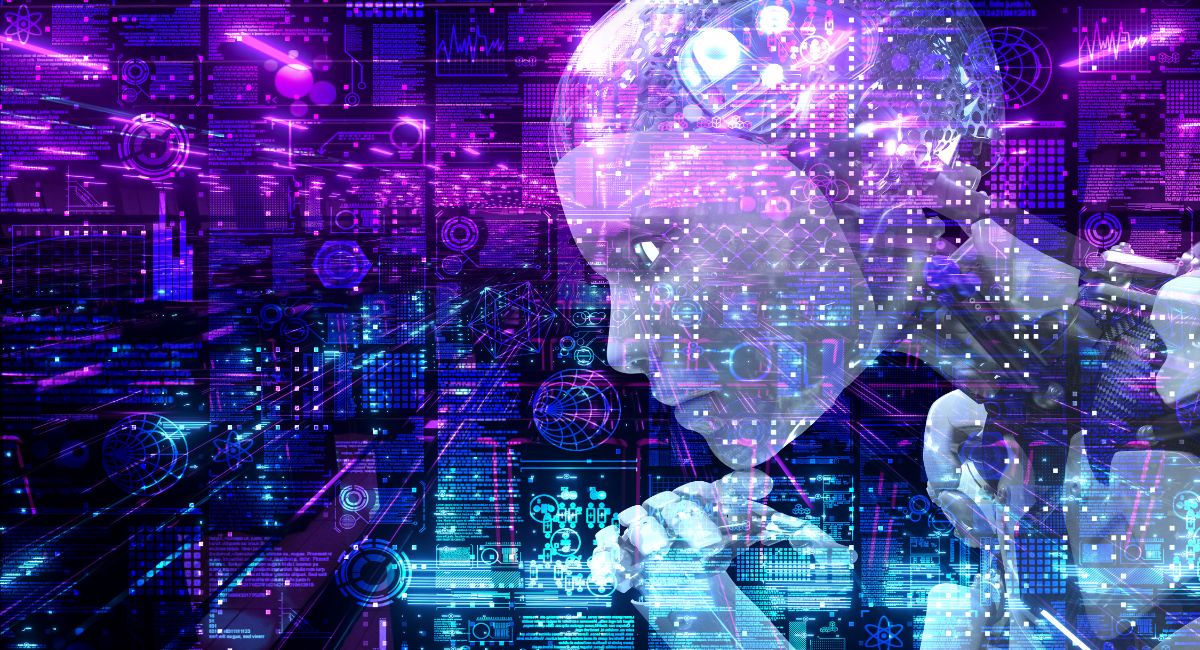Top 10 Ways Blockchain Is The Answer For AI Challenges
The relationship between blockchain and artificial intelligence (AI) is an emerging field with the potential to create powerful synergies. While blockchain focuses on decentralization, transparency, and security, AI is concerned with data analysis, pattern recognition, and automation. When combined, these technologies can enhance each other’s capabilities and address various challenges.
One of the primary intersections between blockchain and AI is in data management and security. Blockchain’s decentralized and immutable nature provides a robust framework for storing and managing large amounts of data. AI algorithms require vast datasets for training and improving their models. By leveraging blockchain, organizations can securely store and share data while maintaining control over its access and integrity. This can be particularly useful in situations where data privacy and trust are crucial, such as healthcare, finance, and personal identity management.
Moreover, the transparency and traceability features of blockchain can enhance the reliability of AI systems. As AI algorithms become more complex and opaque, it becomes essential to ensure accountability and understand the reasoning behind their decisions. By recording AI algorithms, training data, and outcomes on a blockchain, stakeholders can trace the entire lifecycle of AI systems, enabling better auditing, regulation, and trust-building.
Blockchain can also facilitate the sharing of data and models in a decentralized manner, addressing issues of data silos and data monopolies. AI models trained on diverse datasets tend to be more robust and accurate. However, organizations often hesitate to share their data due to concerns about privacy, security, and competitive advantage. Blockchain-based systems can incentivize data sharing through token economies, where participants are rewarded for contributing their data or AI models while maintaining control over their intellectual property rights.
Smart contracts, a feature of blockchain technology, can automate and enforce agreements in AI ecosystems. For example, smart contracts can enable transparent and auditable revenue-sharing mechanisms between data providers, algorithm developers, and model users. These contracts can automatically execute payments, royalties, and licensing fees based on predefined rules, ensuring fair compensation and incentivizing collaboration in AI networks.
In the context of AI training, blockchain-based federated learning has emerged as a promising approach. Federated learning allows training AI models on decentralized devices, such as smartphones or Internet of Things (IoT) devices, while preserving data privacy. Blockchain can be used to manage the federated learning process, ensuring transparency, accountability, and data integrity.
Furthermore, blockchain can help combat issues of AI bias and ensure fairness in algorithmic decision-making. By providing a transparent and auditable record of data sources, data transformations, and model training, biases and discriminatory patterns can be identified and addressed. This can contribute to the development of more ethical and inclusive AI systems.
While the relationship between blockchain and AI holds great potential, it also faces challenges. Blockchain technology’s scalability and processing speed limitations can hinder the performance of AI algorithms that require substantial computational resources. Additionally, integrating blockchain with existing AI infrastructures and platforms can be complex and require significant development effort.
In summary, the combination of blockchain and AI can provide a powerful framework for secure, transparent, and decentralized data management, model sharing, and decision-making. It can address challenges related to data privacy, trust, fairness, and accountability in AI systems. As both technologies continue to evolve, their synergistic relationship is likely to play a crucial role in shaping the future of various industries, from finance and healthcare to supply chain management and beyond.
Blockchain is a revolutionary technology that has gained significant attention and has the potential to transform various industries. At its core, a blockchain is a decentralized and distributed digital ledger that records transactions across multiple computers or nodes. It enables secure and transparent peer-to-peer transactions without the need for intermediaries.
The concept of blockchain was first introduced in 2008 in a whitepaper titled “Bitcoin: A Peer-to-Peer Electronic Cash System” by an anonymous person or group known as Satoshi Nakamoto. While initially developed as a foundation for cryptocurrencies like Bitcoin, the technology has since evolved to have far-reaching applications beyond digital currencies.
At its fundamental level, a blockchain consists of a series of blocks, each containing a batch of verified and encrypted transactions. These blocks are linked together in a chronological order, forming a chain. The transactions stored on a blockchain are verified and agreed upon by a network of participants, also known as nodes, through a consensus mechanism.
One of the key characteristics of blockchain is its decentralized nature. Instead of relying on a central authority, such as a bank or a government, the blockchain network operates on a distributed network of computers. Each node in the network maintains a copy of the entire blockchain, ensuring that no single entity has complete control over the system. This decentralization enhances security, transparency, and trust among participants.
To ensure the integrity and immutability of the data, the transactions recorded on a blockchain are secured using cryptographic techniques. Each block contains a unique identifier called a hash, which is generated by applying a cryptographic algorithm to the data within the block. The hash of each block also includes the hash of the previous block, creating a chain that links all the blocks together. This chaining mechanism makes it extremely difficult to tamper with the data stored on the blockchain. Altering the information in one block would require altering all subsequent blocks, which is computationally infeasible and would be easily detectable.
Consensus mechanisms play a vital role in maintaining the integrity of the blockchain. They ensure that all participants in the network agree on the validity of transactions and the order in which they are added to the blockchain. Various consensus algorithms exist, such as Proof of Work (PoW), Proof of Stake (PoS), and Practical Byzantine Fault Tolerance (PBFT), each with its own set of advantages and trade-offs.
Blockchain technology offers several significant benefits. Firstly, it enhances transparency by providing a public and immutable record of transactions. Every participant in the network can view and verify the transaction history, which promotes trust and accountability.
Secondly, blockchain improves security by eliminating the single point of failure that exists in traditional centralized systems. The distributed nature of blockchain makes it more resilient to hacking and cyberattacks. Additionally, the cryptographic techniques used in blockchain ensure the authenticity and integrity of the data.
Thirdly, blockchain enables peer-to-peer transactions without the need for intermediaries, reducing costs and increasing efficiency. Smart contracts, which are self-executing contracts with predefined rules encoded on the blockchain, enable automated and trustless transactions, eliminating the need for intermediaries or manual processing.
Blockchain technology has found applications across various industries. In finance, it has the potential to streamline processes such as cross-border payments, trade finance, and securities settlement. In supply chain management, blockchain can enhance traceability and accountability by recording the movement of goods from their origin to the final destination. It can also be applied to areas such as healthcare, voting systems, intellectual property rights, and decentralized identity management, to name just a few.
While blockchain holds tremendous potential, it also faces challenges and limitations. Issues such as scalability, energy consumption (particularly for consensus algorithms like PoW), regulatory frameworks, and interoperability between different blockchains are areas that require further research and development.
In conclusion, blockchain is a groundbreaking technology that offers decentralized, transparent, secure,and efficient solutions for a wide range of industries. It has the potential to reshape the way we conduct transactions, share data, and establish trust in a digital world. As the technology continues to evolve, its impact is expected to be far-reaching, opening up new possibilities for innovation and disruption in multiple sectors.
Also read: Blockchain and AI Complement and Enhance One Another- Know How
Top 10 Ways Blockchain is the Answers for AI Challenges
Blockchain and artificial intelligence (AI) are two of the most transformative technologies of our time. Blockchain is a distributed ledger technology that can be used to create secure, transparent, and tamper-proof records of transactions. AI is a branch of computer science that deals with the creation of intelligent agents, which are systems that can reason, learn, and act autonomously.
These two technologies are well-suited to work together, as blockchain can address some of the challenges that AI faces, and AI can help to improve the efficiency and scalability of blockchain. Here are 10 ways that blockchain can help AI:
- Data security and privacy. Blockchain can help to secure and protect sensitive data used by AI models. This is because blockchain is a tamper-proof ledger, which means that data cannot be altered or deleted without the consent of all parties involved. This can help to prevent data breaches and protect the privacy of individuals.
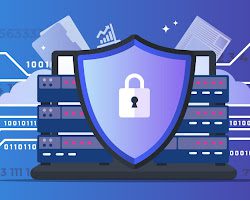
- Data sharing. Blockchain can help to facilitate the sharing of data between different AI models and systems. This can help to improve the accuracy and performance of AI models by giving them access to more data. It can also help to reduce the cost of data collection and storage.
- Model training. Blockchain can be used to train AI models on large datasets of data. This can be done by distributing the data across a network of nodes, which can then train the model in parallel. This can help to speed up the training process and improve the accuracy of the model.
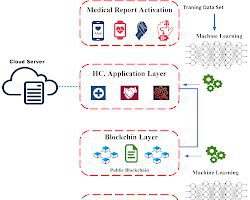
- Model governance. Blockchain can be used to govern the use of AI models. This can be done by creating a decentralized platform where users can vote on decisions about how models are used. This can help to ensure that AI models are used in a responsible and ethical way.
- AI-powered blockchain. AI can be used to improve the performance and scalability of blockchain networks. This can be done by using AI to optimize consensus algorithms, manage transactions, and detect fraud. AI can also be used to develop new blockchain applications, such as decentralized autonomous organizations (DAOs).
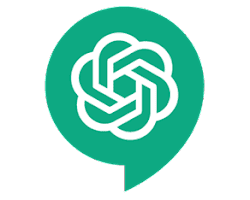
- Decentralized AI. Blockchain can be used to create decentralized AI systems. This means that AI models would not be controlled by any single entity, but would be managed by a network of nodes. This can help to improve the security and privacy of AI systems.
- AI-powered supply chains. Blockchain can be used to create secure and transparent supply chains. This can be done by tracking the movement of goods and materials across the supply chain using blockchain-based records. This can help to improve efficiency, reduce fraud, and ensure the safety of products.
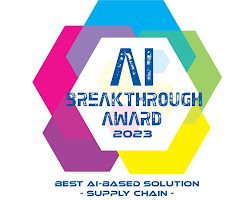
- AI-powered healthcare. Blockchain can be used to improve the security and privacy of healthcare data. This can be done by storing patient data on a blockchain ledger, which can only be accessed by authorized users. This can help to protect patient privacy and prevent data breaches.
- AI-powered finance. Blockchain can be used to create secure and transparent financial systems. This can be done by tracking financial transactions using blockchain-based records. This can help to reduce fraud and improve the efficiency of financial markets.
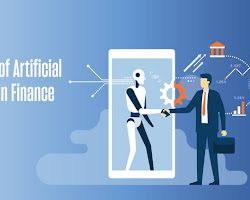
- AI-powered government. Blockchain can be used to improve the transparency and accountability of government. This can be done by storing government records on a blockchain ledger, which can be accessed by the public. This can help to reduce corruption and improve public trust in government.
These are just a few of the ways that blockchain can help AI. As these two technologies continue to develop, we can expect to see even more innovative and groundbreaking applications that will change the way we live and work.
Improtance of AI for Blockchain
Artificial intelligence (AI) plays a significant role in enhancing the functionality, efficiency, and security of blockchain technology. By leveraging AI techniques, blockchain systems can benefit from advanced data analysis, automation, and intelligent decision-making capabilities. Here are several key areas where AI contributes to the importance and development of blockchain:
1. Data Analysis and Insights: Blockchain generates vast amounts of data from various transactions and interactions. AI can be used to analyze this data, extract meaningful insights, and uncover patterns or trends. AI algorithms can help detect anomalies, identify fraudulent activities, and provide predictive analytics, enabling better decision-making and risk management within blockchain networks.
2. Enhanced Security: Blockchain already possesses inherent security features, such as cryptographic techniques and decentralization. AI can further strengthen security by providing intelligent threat detection and prevention mechanisms. AI-powered algorithms can monitor blockchain networks in real-time, identify suspicious activities, and mitigate potential attacks or vulnerabilities. This proactive approach enhances the overall resilience and trustworthiness of blockchain systems.
3. Smart Contract Automation: Smart contracts are self-executing contracts with predefined rules encoded on the blockchain. AI can automate the execution of smart contracts by incorporating machine learning and natural language processing capabilities. This enables the automation of complex business processes, such as supply chain management, insurance claims, or financial transactions. AI can analyze contract terms, verify conditions, and trigger actions accordingly, reducing manual effort and streamlining operations.
4. Consensus Mechanism Optimization: Consensus mechanisms are critical components of blockchain networks that ensure agreement and validity of transactions. AI techniques can optimize consensus algorithms, making them more efficient, secure, and scalable. For example, AI algorithms can help select optimal nodes for participation, dynamically adjust consensus parameters based on network conditions, or detect and mitigate malicious behavior within the consensus process.
5. Data Privacy and Identity Management: Blockchain has the potential to enhance data privacy by providing individuals with control over their personal information. AI can contribute to privacy-preserving techniques by using methods such as differential privacy, homomorphic encryption, or zero-knowledge proofs. These AI-powered privacy solutions allow users to securely share data or perform computations on encrypted information while preserving confidentiality.
6. Scalability and Performance: Blockchain faces challenges in terms of scalability and processing speed, especially as the volume of transactions increases. AI can help address these challenges by optimizing resource allocation, improving transaction throughput, and reducing latency. AI techniques like machine learning can analyze transaction patterns, predict network congestion, and dynamically allocate resources, thus improving the overall scalability and performance of blockchain systems.
7. Fraud Detection and Compliance: Blockchain transactions can be audited and traced, but identifying fraudulent activities or ensuring compliance can be challenging. AI-powered solutions can analyze transactional patterns, network behavior, and regulatory requirements to detect fraudulent transactions, money laundering, or non-compliance. This helps in maintaining the integrity and transparency of blockchain networks and promotes trust among participants.
In summary, AI brings valuable capabilities to blockchain technology, enhancing its functionality, security, and efficiency. By combining AI techniques with blockchain, organizations can unlock new possibilities for data analysis, automation, and intelligent decision-making. The synergy between AI and blockchain fosters innovation and drives the development of more robust and intelligent decentralized systems.
Also read: Blockchain And AI Combined Can Make The World A Better Place
Future of Blockchain and AI
The future of blockchain and artificial intelligence (AI) holds tremendous potential, as these technologies continue to evolve and intersect in various domains. Here are some key aspects that shape the future of blockchain and AI:
1. Enhanced Data Management: Blockchain can provide a secure and decentralized infrastructure for managing vast amounts of data, while AI techniques can enable advanced data analysis and insights. The integration of AI with blockchain will result in more efficient data management, improved data quality, and better decision-making based on intelligent algorithms. This combination will empower organizations to derive valuable insights from blockchain data, leading to more accurate predictions, personalized services, and data-driven innovations.
2. AI-Driven Automation: The convergence of blockchain and AI will accelerate the automation of various processes across industries. Smart contracts, powered by AI, will enable the automatic execution of agreements and transactions, reducing the need for intermediaries and manual interventions. This automation will streamline supply chains, financial transactions, legal contracts, and other complex processes, leading to increased efficiency, cost savings, and faster transaction speeds.
3. Trust and Transparency: Blockchain’s core attributes of transparency and immutability, combined with AI’s ability to analyze and verify data, will foster trust in various domains. The integration of AI algorithms with blockchain can provide real-time auditing and verification, ensuring the integrity of data and processes. This transparency and trust will be particularly valuable in areas such as supply chain management, healthcare, finance, and governance, where accountability and traceability are critical.
4. Decentralized AI Networks: Blockchain can facilitate the creation of decentralized AI networks, where data providers, AI developers, and users can collaborate and share resources securely. Blockchain’s decentralized architecture allows for the secure and controlled sharing of data while preserving privacy and ownership. AI models trained on distributed datasets can be shared across the network, enabling organizations to leverage collective intelligence and create more accurate and robust AI solutions.
5. AI for Blockchain Scalability and Efficiency: Blockchain technology faces scalability challenges in terms of transaction throughput and energy consumption. AI can play a crucial role in optimizing blockchain consensus mechanisms, improving scalability, and reducing resource requirements. AI algorithms can analyze transaction patterns, predict network congestion, and dynamically allocate resources, leading to more efficient blockchain networks capable of handling a higher volume of transactions.
6. Ethical and Fair AI: The combination of blockchain and AI can address ethical concerns associated with AI algorithms. Blockchain’s transparency can help identify and mitigate biases in AI decision-making processes. By recording and auditing the data sources, transformations, and decision-making logic on the blockchain, stakeholders can ensure fairness, accountability, and compliance with ethical standards.
7. New Business Models and Token Economies: The integration of blockchain and AI opens up opportunities for innovative business models and token economies. Blockchain can enable the creation of decentralized AI marketplaces where participants can exchange AI models, data, and services securely. Token economies powered by blockchain can incentivize data sharing, collaborative AI development, and reward contributors for their contributions to the network.
8. Interoperability and Integration: As blockchain and AI evolve, interoperability and seamless integration between different blockchain networks and AI platforms will be essential. Standards and protocols will need to emerge to ensure the interoperability of AI models, data sharing, and seamless integration between various blockchain implementations. Interconnected blockchain and AI systems will foster a collaborative ecosystem and unleash the full potential of these technologies.
In conclusion, the future of blockchain and AI holds immense promise across industries and societal domains. The convergence of these technologies will drive innovation, transform business processes, enhance data management, and foster trust and transparency. As organizations explore and invest in the possibilities of blockchain and AI integration, we can expect to see groundbreaking applications, improved efficiencies, and novel solutions that will shape the way we live, work, and interact in the years to come.
Also read: This Blockchain And AI Startup Is Transforming The Insurance Industry
Stay informed with daily updates from Blockchain Magazine on Google News. Click here to follow us and mark as favorite: [Blockchain Magazine on Google News].
Get Blockchain Insights In Inbox
Stay ahead of the curve with expert analysis and market updates.
latest from tech
Disclaimer: Any post shared by a third-party agency are sponsored and Blockchain Magazine has no views on any such posts. The views and opinions expressed in this post are those of the clients and do not necessarily reflect the official policy or position of Blockchain Magazine. The information provided in this post is for informational purposes only and should not be considered as financial, investment, or professional advice. Blockchain Magazine does not endorse or promote any specific products, services, or companies mentioned in this posts. Readers are encouraged to conduct their own research and consult with a qualified professional before making any financial decisions. The featured image used is just a creative depiction of the title and it does not intend to hurt sentiments of any person or institution. If it hurts anyone sentiments, please do not hesitate to reach out to Blockchain Magazine.

 Bitcoin
Bitcoin  Ethereum
Ethereum  XRP
XRP  Tether
Tether  Solana
Solana  USDC
USDC  Dogecoin
Dogecoin  Cardano
Cardano  Lido Staked Ether
Lido Staked Ether  TRON
TRON  Chainlink
Chainlink  Wrapped Bitcoin
Wrapped Bitcoin  Sui
Sui  Wrapped stETH
Wrapped stETH  Avalanche
Avalanche  Stellar
Stellar  Hedera
Hedera  Toncoin
Toncoin  Shiba Inu
Shiba Inu  LEO Token
LEO Token  Hyperliquid
Hyperliquid  Bitget Token
Bitget Token  Litecoin
Litecoin  WETH
WETH  USDS
USDS  Polkadot
Polkadot  Bitcoin Cash
Bitcoin Cash  Ethena USDe
Ethena USDe  MANTRA
MANTRA  Wrapped eETH
Wrapped eETH  Uniswap
Uniswap  Ondo
Ondo  Pepe
Pepe  Monero
Monero  Aave
Aave  WhiteBIT Coin
WhiteBIT Coin  NEAR Protocol
NEAR Protocol  Mantle
Mantle  Official Trump
Official Trump  Aptos
Aptos  Dai
Dai  Internet Computer
Internet Computer  Ethereum Classic
Ethereum Classic  Bittensor
Bittensor  Cronos
Cronos  OKB
OKB  POL (ex-MATIC)
POL (ex-MATIC)  Gate
Gate 